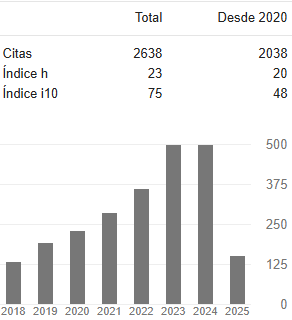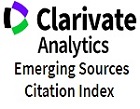El diodo Schottky como atenuador del efecto Seebeck en una celda Peltier para un control PID de temperatura
DOI:
https://doi.org/10.31908/19098367.558Palabras clave:
celda Peltier, PWM, efecto Seebeck, control PIDResumen
En la nanociencia y en la nanotecnología, una de las herramientas más poderosas es el microscopio de fuerza atómica (AFM siglas en inglés). Instrumento que sirve para caracterizar los materiales a nivel superficial. Dentro de esas características está evaluar la dureza a escala manometría (nanodureza), utilizando el método de nanoindentación en el modo de espectroscopia. En materiales como las películas delgadas en los que sus espesores son del orden de decenas de nanómetros de espesor, el equipo adecuado para medir la dureza es el AFM. En este artículo se pretende realizar una primera aproximación a algunos modelos usados para evaluar la dureza usando el AFM a partir del modelo elástico.
Descargas
Referencias
J. Benedito, J. Carcel, R. Gonzalez y A. Mulet, «Application of low intensity ultrasonics to cheese manufacturing processes,» Ultrasonics, 2002.
M. Riahi, I. Trelea, M.-N. Leclercq-Perlat, D. Picque y G. Corrieu, «Model for changes in weight and dry matter during the ripening of a smear soft cheese under controlled temperature and relative humidity,» International Dairy Journal, 2007.
D. D. Muir, E. A. Hunter, J. M. Banks y D. S. Horne, «Sensory properties of Cheddar cheese: changes during maturation,» Food Research International, 1996.
D. Picque, H. Guillemin, P. Mirade, R. Didienne, R. .Lavigne, B. Perret, M. Montel y G. Corrieu, «Effect of sequential ventilation on cheese ripening and energy consumption in pilot ripening rooms,» International Dairy Journal, 2009.
Z. Xiao y Z. Li-Dong, «Thermoelectric materials: Energy conversion between heat and electricity,» Journal of Materiomics 1, 2015.
Los incubadores refrigerados IPP de Memmert, Alemania: Memmert, 2014.
G. A. Mannella, V. La Carrubba y V. Brucato, «Peltier cells as temperature control elements: Experimental characterization and modeling,» Applied Thermal Engineering, 2013.
T. Brestovic, N. Jasminská, M. Carnogurská, M. Puškár, M. kelemen y M. Filo, «Measuring of thermal characteristics for Peltier thermopile using calorimetric method,» Measurement, 2014.
J. Pérez–Aparicio, R. Palma y R. Taylor, «Finite element analysis and material sensitivity of Peltier thermoelectric cells coolers,» International Journal of Heat and Mass Transfer, 2011.
J. J. Paez y J. E. Rodriguez, «Propiedades electricas y estructurales de compuestos creamicos del tipo CaMnO-Y,» Revista de Fisica, Momento, 2012.
W. Shengjun y D. Mingcong, «Operator-based robust nonlinear control and fault detection for a Peltier actuated thermal process,» Mathematical and Computer Modelling, 2011.
E. Garcia, Compilador C CCS y simulador PROTEUS para microcontroladores PIC, Mexico: Alfa y Omega Grupo Editor, 2008, p. 143.
C. J. Hermes y J. R. Barbosa, «Thermodynamic comparison of Peltier, Stirling, and vapor compression portable coolers,» Applied Energy, 2012.
A. Sellitto, V. Cimmelli y D. Jou, «Influence of electron and phonon temperature on the efficiency of thermoelectric conversion,» International Journal of Heat and Mass Transfer, 2015.
R. Hopfel y J. Shah, «Electron.hole drag in semiconductors,» SolidState Electronics, 1988.
J. Jay-Gerin, «Thermoelectric power of semiconductors in the extreme quantum limit: The electron-diffusion contribution,» Journal of physics and chemistry of solids, 1974.
P. Egolf, L. Gravier, T. Francfort, A.-G. Pawlowski y G. Courret, «High-frequency magnetocaloric modules with heat gates operating with the Peltier effect,» International journaly of refrigeration, 2014.
M. Bagheri Tagani y H. Rahimpour Soleimani, «Phonon-assisted thermoelectric effects in a two-level molecule,» Physica B, 2013.
C. Qiao, W. Zhi-yong y X. Zhong-Xiang, «Enhancement of the thermoelectric figure of merit in a quantum dot due to external ac field,» Physics Letters A, 2013.
J. Hort y G. Le Grys, «Developments in the textural and rheological properties of UK cheddar cheese during ripening,» International Dairy Journal, 2001.
Descargas
Publicado
Número
Sección
Licencia
Derechos de autor 2019 Entre Ciencia e Ingeniería

Esta obra está bajo una licencia internacional Creative Commons Atribución-NoComercial 4.0.



















